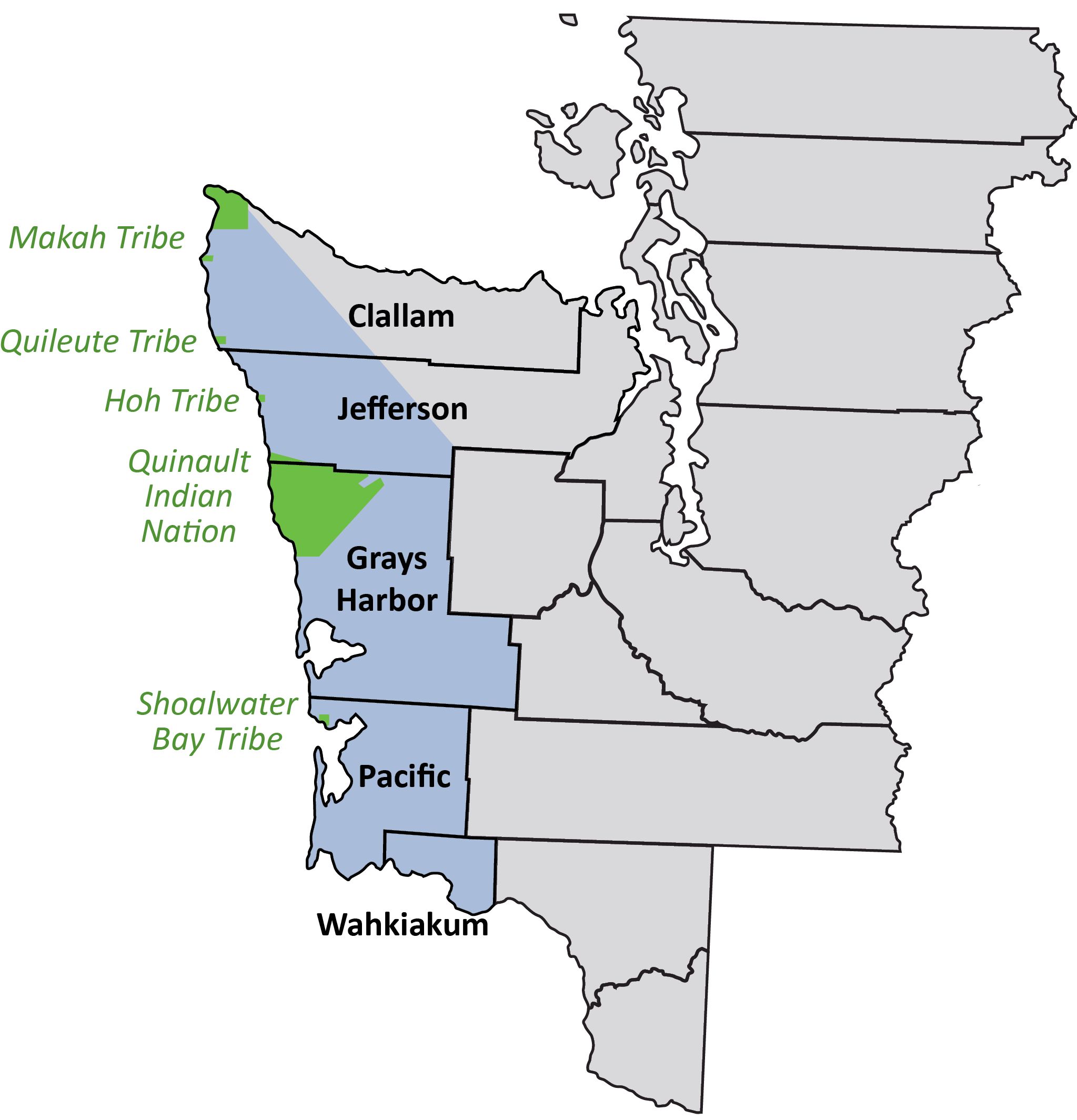Washington Coastal Resilience Project Ups Hazard Readiness
The Takeaway: New sea level rise projections and guidance are informing community policies, plans, development, and funding projects, with help from NOAA programs and grants.

Many partners joined forces on a multi-year project to assist Washington State’s coastal communities in strengthening their resilience to sea level rise, storm surges, wave impacts, and shoreline erosion. The products that emerged from this effort include localized sea level rise projections plus guidance that coastal communities—including tribes and rural towns—can incorporate into their policies, plans, funding mechanisms, and development projects. Washington Sea Grant leads the Coastal Resilience Project, with collaboration from Washington’s Coastal Zone Management Program, the Padilla Bay National Estuarine Research Reserve, and a NOAA Regional Coastal Resilience Grant.
Additional major partners include the University of Washington’s Climate Impacts Group and The Nature Conservancy. NOAA also provided funding support to the Pacific Northwest Climate Impacts Research Consortium.
The partners worked directly with the pilot communities of Island County and the City of Tacoma. Both communities are using project guidance in their planning processes, which include a major waterfront redevelopment project in Tacoma. The state’s Estuary and Salmon Restoration Program also has incorporated the new sea level rise information and guidance into its grant program for restoration projects.
A vigorous outreach and education campaign ensured that the hazard projections and guidance were useful both to community members and to coastal officials, managers, and planners. Project partners took the following steps to strengthen institutional partnerships and hosted 50-plus workshops and meetings that engaged nearly 800 people:
- Overhauled the Washington Coastal Hazards Resilience Network website to reflect a “resilience ambassador” approach that engages coastal professionals and nonprofessionals alike;
- Led 230 coastal planners and others in hands-on exercises applying the new sea level rise information—72 percent of respondents in a post-workshop survey are already using new projections to manage the shoreline, restore coastal areas, and fortify public facilities and infrastructure;
- Rolled out two new adaptation-focused courses, with the help of the Padilla Bay Research Reserve, that focus on communicating this information and sparking positive local action; and
- Championed media efforts that generated 41 articles, six TV news stories, and three radio news features.
Partners are still reaching out to additional communities. In March 2022, a NOAA-funded report identified more than 175 current projects that could help rural and tribal coastal communities boost their adaptation capacity, if they collaborate with one another and seek government funding and technical resources. Furthermore, community-led resilience projects are on the increase with the help of Washington Sea Grant and the Washington Department of Ecology. (2020/2022)
Partners: City of Tacoma, Island County, King County, Padilla Bay Research Reserve, Metro Parks Tacoma, Pacific Northwest Climate Impacts Research Consortium, The Nature Conservancy, University of Oregon, U.S. Geological Survey, Washington State Department of Ecology’s Coastal Zone Management Program and Department of Fish and Wildlife’s Estuary and Salmon Restoration Program, and the University of Washington’s Climate Impacts Group, College of the Environment, Department of Earth and Space Sciences, Department of Marketing and Communications, and School of Marine and Environmental Affairs
PRINT